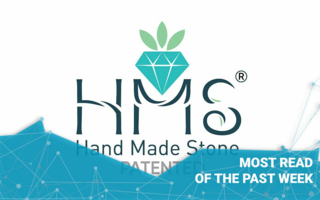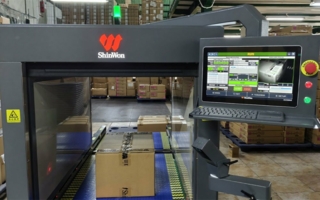14/06/2018 – Soccer World Cup 2018 — auf Deutsch lesen
A lucky charm for the German national team
Will Yogi Löw set another fashion trend at the upcoming Soccer World Cup?
In 2010, the sales figures of blue knitted sweaters with a V-neck worn by the national team’s manager went through the roof. The demand was enormous, but the trade was not prepared for it.
Problems like these can be solved by a Microfactory.
The blue knitted sweater Joachim Löw wore at the 2010 Soccer World Cup in South Africa was a lucky charm for the German national team. Sales of blue V-neck sweaters increased massively in the retail trade – there were even waiting lists in some places. “The trends for the various fashion seasons are determined long in advance by the apparel industry – but the trade has so far been unable to respond to demands that have risen as sharply as we experienced with the blue Löw sweater in 2010,” says Dr. Andreas Seidl, CEO of the Human Solutions Group.
Long reaction times inhibit sales
Apparel development cycles extend over several months. Only very few German companies produce in Germany at all, so even with a hastily-scheduled post-production, it still takes some time until a delivery actually arrives in the country and is then distributed to the stores. In the case of the Yogi Löw pullover, the trade could have achieved significantly higher sales if it had reacted faster.
Digitalization ensures faster processes
The technical possibilities to significantly accelerate the development process of fashion now exist – the digitalization of the industry is in full swing. In principle, time can be saved during almost every process step. The key technology for faster product development in the apparel industry is 3D. “The first companies are using 3D simulations, especially for pattern creation,” explains Seidl. “If the pattern of a garment has been designed on a computer, 3D makes it possible to make that garment perfectly visible in three dimensions. This is much faster than sewing a pattern. Alterations like a different color or a different neckline can be made with just a few clicks.”
Microfactories – fast and close to the customer
Microfactories can be a solution for responding to short-term bottlenecks caused by sudden increases in demand. They are ideal for fast production in close proximity to the customer, especially for individually designed clothing, and they make production profitable, even for batch size 1. With a 3D simulation, a customer can design a garment exactly how he or she wants it to look. A customer designs a pullover, for example, and decides on its production and purchase based on a photorealistic simulation. If he is satisfied with his product, production can start immediately.
“We have already demonstrated the Microfactory for the production of individual running shirts at several trade fairs, and we’ll realize the first Microfactory for knitwear at our Fashion Forum in Munich. This enables us to show how a sweater can be created to match individual preferences within a few hours,” says Seidl.




